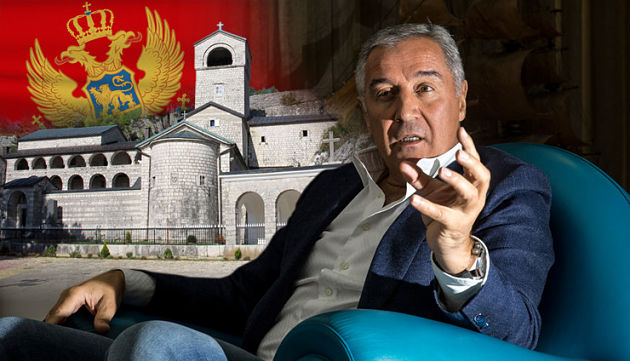The past year was marked by a series of sensitive defeats for one of the main “props” of the Putin regime – the Russian Orthodox Church (ROC) and its promoted concept of the “Russian world”. The main loss, of course, was the creation, with the support of former Ukrainian President Petro Poroshenko, of the Orthodox Church of Ukraine (OCU), which began to be recognized by other local Orthodox churches and led to Orthodox Ukrainians switching from the Moscow Patriarchate to the OCU (https://golosislama.com/news.php?id=34997).
For the ROC under the leadership of Patriarch Kirill, who presents himself as the restorer of Orthodoxy, this resulted not only in the loss of hundreds of parishes (with the process of transition still ongoing), but also in the rupture of ties with the largest centers of world Orthodoxy that supported the OCU.
Just as at the beginning of last year the issue for these circles was the inevitable loss of control by the “Russian Church” over Orthodox Ukraine, at the end and beginning of this year the issue became the loss of control by its closest ally – the Serbian Church – over Orthodox Montenegro. The authorities of Montenegro, following the example of the previous Ukrainian government, decided to pursue the creation of an autocephalous (independent) Montenegrin Orthodox Church and to transfer the Orthodox population, a significant part of which is still subordinated to the Serbian Orthodox Church, to this new church.
In order to speed up this process, a new Law on Freedom of Religion was adopted, according to which religious organizations that own religious property that existed before 1918 must prove that they owned it before that date, rather than acquiring it afterward. The significance of this approach is that in 1918 Montenegro was absorbed into the Kingdom of Serbs, Croats and Slovenes, within which all Orthodox peoples, namely Montenegrins and Macedonians, were registered as Serbs and subjected to Serbization. Accordingly, the authorities in Montenegro now want to take away from the Serbian Church what it has acquired under the patronage of the Great Serbian authorities and transfer this property to the independent Montenegrin Church itself.
There is almost a complete analogy with Ukraine, because in the Great Serbian mythology Montenegro plays a role similar to that of Ukraine for the “Russian world”. Put simply, just as the leaders of the “Russian world” deny the existence of a separate Ukrainian nation, the proponents of Great Serbianism deny the existence of a Montenegrin nation and consider Montenegrins to be part of Great Serbia.
In both cases, religion has been sacrificed to chauvinistic claims. It is clear that if the ROC had been guided by the interests of Orthodoxy, it would have been the first to recognize the independent Ukrainian Orthodox Church and would have gained in it a like-minded neighbor and ally. Similarly, if the Serbian Church hierarchs were concerned about the welfare of Orthodoxy and the unity of its adherents, they would have recognized the Montenegrin Church and preserved that unity. However, just as it is important for the ROC to keep the Orthodox Ukrainians under the “Russian Church”, it is important for the Serbian Church to keep the Orthodox Montenegrins under the Serbian Church.
But it is not only these parallels that explain why the ROC and, with its support, Putin’s Russia, see the developments in Montenegro as their own defeat. First, the Serbian Church is one of the few and perhaps the most important ally of the ROC in its confrontation with the Constantinople Patriarchate and its supporting churches, and this is a purely pragmatic reason. Second, it was actually in Serbia in the 1990s that the doctrine of “Greater Serbia” emerged, which later, after the rise to power of Vladimir Putin and Kirill Gundyaev (in the ROC), became the basis for the doctrine of the “Russian World”.
The defeat of this doctrine in the war in the former Yugoslavia, manifested in the defeat of the Serbian “Republika Srpska” in Croatia, the loss of Kosovo, and the separation of Orthodox Montenegro and Macedonia, became a trauma for the ideologists of the “Russian world” and what motivated them to seek revenge. They planned that after similar forces gained control over a nuclear power (the doctrine of “atomic Orthodoxy”), they would be able to take revenge and achieve the goals of uniting the Orthodox world around Moscow, as they had outlined at the end of the 19th century.
In the end, however, today they are losing what they had even before these “restorers of Orthodoxy” came to power. (In the photo – President of Montenegro Milo Djukanovic and the Montenegrin flag over a local Orthodox monastery)

